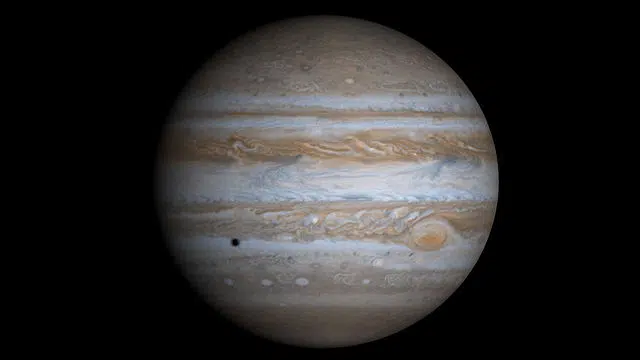
Jupiter rules the solar system with its impressive mass, size, and now its colossal family — boasting 92 moons.
Scientists recently discovered another 12 of these celestial bodies (moons), giving this gaseous giant a total number of moons more than any other planet.
However, according to the scientists, 11 of them are regular moons orbiting Jupiter and one surprise “oddball” moon, making it more mysterious than ever.
The team behind the discovery
These moons were first spotted in the spring of 2017 by a team led by Carnegie’s Astronomer, Scott S. Sheppard, who was on the hunt for a potential huge planet far beyond Pluto.
In 2014, the same planet search team changed our understanding of the Solar System with their discovery. Led by astronomers Mike Brown and Konstantin Batygin, they realized that an undiscovered massive world at the edge of our system could explain why certain small objects have oddly similar orbits – now commonly referred to as Planet X or Planet Nine.
Dave Tholen from the University of Hawaii and Chad Trujillo from Northern Arizona University are also part of this groundbreaking discovery.
Jupiter reigns supreme (in the moon department) again!
In 2019, Saturn's moon count went up to 83, overtaking Jupiter with the most known moons in the solar system. This is no longer true. At 92 moons, Jupiter has 9 more known moons than Saturn, the most in the solar system. 👑 pic.twitter.com/zUQ0jSkPJf— Sophia Gad-Nasr (@Astropartigirl) February 6, 2023
“Jupiter just happened to be in the sky near the search fields where we were looking for extremely distant Solar System objects, so we were serendipitously able to look for new moons around Jupiter while at the same time looking for planets at the fringes of our Solar System,” said Sheppard.
Interestingly, the International Astronomical Union’s Minor Planet Center took only one year for Gareth Williams and his team to calculate orbits for the newly found moons around Jupiter. Taking into account several observations, he stated, “It takes several observations to confirm an object actually orbits around Jupiter.”
Nine new moons from the outer swarm
These nine moons, part of a distant outer swarm, travel incredibly slowly, taking two whole years to complete their orbit.
Astounding research has indicated that there are at least three distinct orbital groupings among these nine retrograde moons, hinting at their intriguing past.
Scientists have hypothesized that they could be the remnants of three once-larger parent bodies that separated after getting into an accident with asteroids, comets, or other objects.
Two new moons from the inner group
Two of these twelve newly discovered moons are within the inner and closest orbits to the planet, orbiting in what is known as a prograde pattern, the same direction as Jupiter’s rotation.
So far, astronomers have found that all of the inner prograde moons share similar inclination angles around Jupiter and similar distances between each other, leading them to believe that these smaller moons could be remnants of a larger moon that has since been shattered into pieces.
1. Jupiter has officially become the planet with the most moons in the solar system, now counted at 92, thanks to the discovery of 12 more natural satellites, astronomers have said. The previous record-holder, Saturn, has dropped to 2nd spot, being orbited by 83 confirmed moons.— pic.twitter.com/JpEFREQRpj
— ꧁༺𝐕𝐢𝐤𝐭𝐨𝐫𝐢𝐚𝐧𝐚༺꧂ (@8102ops) February 5, 2023
The two most recent moons take just under one year to complete a revolution around Jupiter.
“Our other discovery is a real oddball and has an orbit like no other known Jovian moon,” Sheppard explained. “It’s also likely Jupiter’s smallest known moon, being less than one kilometer in diameter.”
The ‘oddball moon’
This new “oddball” moon orbiting Jupiter is certainly an anomaly. Not only is it more distant and inclined than the average group of prograde moons, but its orbit also crosses the outer retrograde moons, making collisions between them much likelier.
The “oddball” moon takes one and a half years to complete its orbit around Jupiter.
“This is an unstable situation,” said Sheppard. “Head-on collisions would quickly break apart and grind the objects down to dust.”
See all the latest news from Greece and the world at Greekreporter.com. Contact our newsroom to report an update or send your story, photos and videos. Follow GR on Google News and subscribe here to our daily email!



